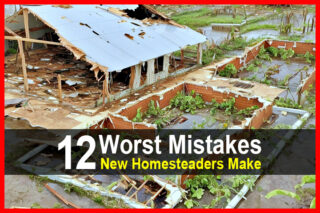Estimated reading time: 9 minutes
Building a homestead takes a lot of time and a lot of patience. While many of us homesteaders want to jump right into every project on our Pinterest board, you have to get to know your land first. Many would argue that no homestead is ever finished; there is always something to work on, even decades down the road.
Part of building a homestead is learning the right and wrong way to do things. All homesteaders can tell you stories about that first fancy chicken coop that was too heavy to move or that one time the entire garden was eaten by wild rabbits. Every homesteader has a wide range of stories to teach those just starting out.
Want to save this post for later? Click Here to Pin It On Pinterest!
Getting your own piece of land is a dream come true for many fellow homesteaders across the country. Just like any big adventure, there are grand ideas on how everything will look and turn out.
However, not making a plan for your homestead is the ultimate mistake that can cost you a ton of time, money, and frustration. Learn more about this one major mistake that could ruin your homestead before it even starts.
How to Develop a Homestead Plan
Creating a plan can seem easy, but it is much more than just putting the garden and coops in different parts of the land.
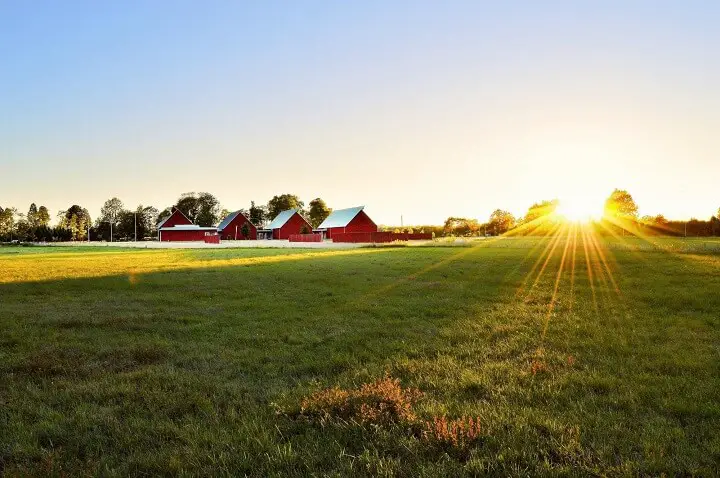
Know Your Land
One of the essential parts of making a plan for the homestead is getting to know your land. Getting to know your land isn’t just knowing which areas get the most sunlight. Take some time to really watch your property.
What is the terrain like? Is there an area that floods or is wetter than other areas? What areas are prone to wind damage? How do the mature trees affect the ground underneath? What is growing wild on the land that you can use to your benefit? Where does the shade fall most on the land?
All of these observations are things that you won’t know until you spend some time on the land.
Learn the History
Another critical part of making a good homestead plan is understanding the history of the land. Unless you are clearing forest for a homestead, it is a safe bet that your homestead once belonged to someone else. This means that someone just like you set out to create their oasis on the same piece of property.
If possible, ask the past owners what they can tell you about the land. Another excellent resource is the nearby neighbors who have lived in the area their entire lives. They can tell you if there was once a barn on the land or what kind of buildings once stood that are long gone now.
Knowing this kind of information is vital when planning out your homestead. No one wants to run into a surprise foundation when digging!
Another way to find out the history of your land is to go to your county records office. They should have a long history of who has lived on the property as well as any past building permits.
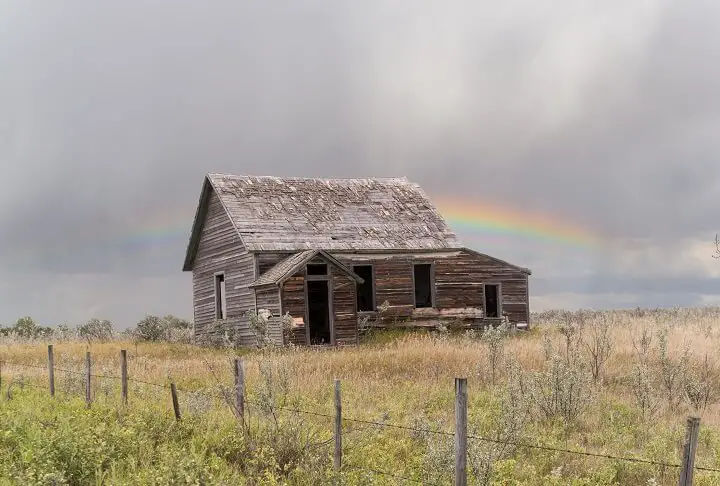
Look into local vintage aerial photograph companies that may have a picture of your land from decades ago. These pictures are only a snapshot but can tell you a lot about how the homestead was set up in the past.
Know Your Facts
One of the best parts of nature is that today’s plants and livestock often don’t change much from the past. Learning about how to homestead will go far in helping you develop a homestead plan.
Do Your Research
There are plenty of resources available when it comes to choosing this way of life. The homesteading community is all about sharing ideas and knowledge for the greater good. You’ll find a lot of homestead books about different plans and how to use every square inch of the property.
There are many ways and techniques to build and develop the land, so make sure that you invest your time in the way that you want to run your homestead.
Understand Your Purpose
While homesteading may look the same from the outside, it can be a totally different system depending on the method used. Some people choose to homestead by using chemicals and fertilizers on their plants, while others don’t use any kind of chemical enhancements.
Some want to focus just on livestock, while others want only to grow fruits and vegetables. Some homesteaders wish to use every last square inch of land for a purpose while others are okay with mowing a large piece of land for a lawn.
Understanding your preferences and the reasons they're important to you is an integral part of developing the right plan. When you have decided on a method, make sure to talk with your spouse about it so that everyone is on the same page as well.
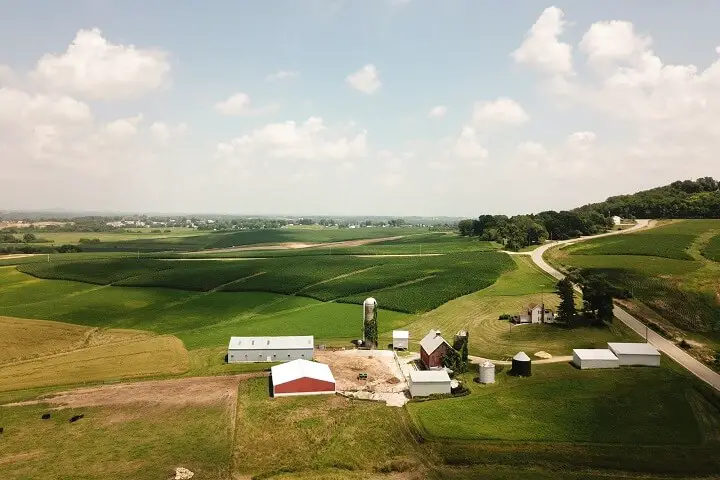
Plan Out Permaculture Zones
Where you plan on building up different parts of the homestead relies greatly on location. While the actual home itself often can’t be moved, there are plenty of options on how to build up around the house.
You may think that you’ll access every corner of the homestead on a daily basis, but the truth is that there are natural areas of the property that will see less use than others. Understanding the permaculture zones of the land and how you will utilize different regions is vital to planning out a homestead that will work for you years down the road.
Know Your Finances
Unless you have a bunch of money to invest in the homestead, you’ll likely need to decide on a budget. Homesteading is often a frugal way to live, but it still involves plenty of costs.
Choose a Budget
Building a homestead can be quite expensive, but it doesn’t have to be. Many homesteaders are those that enjoy making use of recycled materials for other purposes. However, there are a few homesteaders who want only the best of the best material for their projects. Choosing a budget to spend on homestead projects will help keep you in check and hopefully cut down on fights with the spouse.
Consider walking through the local lumber yard or building center to learn about how much homestead materials cost. You may be surprised at how much a hog panel is or the price of lumber to build an outbuilding. Knowing your budget, and sticking to it, will help spread the wealth around different areas of the homestead.
Know the Plan
Communication is key when starting a homestead. While you may have great ideas, it is essential to share them with the rest of the family that will help build up the property.
Make a Homestead Wish List
Families often move to the homestead together. When planning out your property, consider asking everyone in the family their opinion. Create the ultimate homestead wishlist to help everyone get on the same page. Don’t dictate or limit the suggestions; homesteading is all about doing things your way.
Know the Timeline
Remember that homesteads take a lot of time to build and develop. No one does all of the projects they want to do (and get them all right) in the first year. Be patient, and stick to the plan to help your homestead develop.
Plan Out Different Phases
Once you make the wish list, consider going through the list again to find the items that have top priority. For example, if you have ordered chicks, you’ll need someplace to put them for the time being.
Even if their shelter is temporary, it is a good idea to work on those items that need to be done soon. Other top-priority items include garden plots that take time for plants to grow and mature.
Dividing your wish list into phases will help take the pressure off of you to create the ultimate homestead the first year. Your budget will also help dictate what exactly will happen the first year as well. It will take much of that time to research and learn about the land.
Consider doing just the top one or two items on the wish list over the first year to allow yourself time to plan and think.
Set Long Term Goals
Another element of creating a homestead plan is to plan long term goals. This helps keep everyone on track and can be a good reminder down the road of a forgotten project. While homestead plans can change, it is good to have long term goals on the horizon.
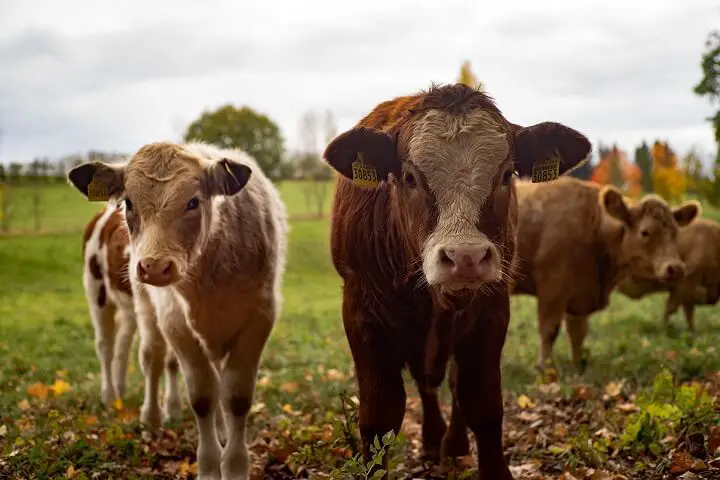
For example, if you know that you want to raise pigs or cows in the future, consider saving a spot for them. Gather the materials needed to build the pen and fencing over time.
Contact a good breeder and take small steps to reach a big overall goal like raising pigs on the homestead. Many long term goals are things that either cost a lot of money or aren’t essential items for the property.
There are many things to consider when planning out a homestead. Building a homestead into your dream property will take time and include more mistakes than we homesteaders care to admit. However, the one major mistake that could ruin your homestead is not to plan at all.
Take the time needed to develop a short and long term plan that will eventually create the property of your dreams. Planning out your approach will pay off when it saves you countless time, money, and frustration along the way.
Like this post? Don't Forget to Pin It On Pinterest!









